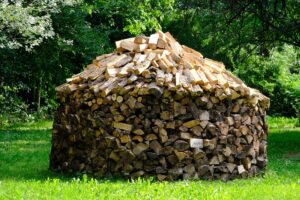Knowing what you’re dealing with when you buy lumber is essential to ensuring that your wood construction project is a success. Here is some information about dimensional lumber to help you make the right decision for your home or apartment construction project.
There are different types of dimensional lumbers, and each one has both nominal dimensions and actual dimensions. For example, a 2×4 is 1 1/2 inches by 4 inches.
Nominal Size
If you’re a do-it-yourselfer, dimensional lumber is the wood of choice for many projects. This type of lumber has standardized thicknesses and widths, so it’s easy to work with. It’s often used to frame the skeleton of buildings or create load-bearing walls, floors, and roofs. It’s also useful for creating outdoor structures like decks, pergolas, and fences.
One thing to keep in mind when working with dimensional lumber products is that there are two types of measurements: nominal and actual size. The nominal size is the name that the lumber is given, for example, a 2×4. The actual size is what it measures after being rough cut and before the drying and planning processes. The reason there is a difference between the two measurements is that wood shrinks during the drying process, which affects the width of the board. For example, a 2×4 loses 1/2 inch of width when it’s dried. The same is true for the wider boards (2×6’s, 2×10’s, etc).
When you buy a piece of dimensional lumber, it will be stamped with both the nominal and actual size on the tag. You can use this information to determine what you need for your project. It will also help you avoid problems with the wood, such as warping or bowing. These problems can be caused by environmental conditions or by the way the lumber is handled or stored.
Dimensional lumber is made from a variety of different wood species, including pine, fir, and spruce. Each has its unique characteristics, such as strength, durability, and resistance to decay. However, most dimensional lumber is made from pine because it’s more affordable than other types of wood.
There are three basic grades of dimensional lumber: prime, structural, and utility. The higher the grade, the more beautiful and stronger the lumber is. The prime grade hardwood lumber has fewer knots and imperfections than structural and utility lumber, while the structural grade has more knots and imperfections. While the quality of dimensional lumber depends on the wood species, it can also depend on the time of year and the weather.
Actual Size
If you are in a lumber yard or home center, you will find that most wood is sold in several different sizes. This is called dimensional lumber, and it is most often used for the framing of buildings. It is also commonly used to create load-bearing walls, floors, and roofs. It can be purchased in a variety of lengths and is most commonly made from softwood species like Douglas fir, spruce, and Hem-Fir (a mixture of western hemlock and amabilis fir).
Dimensional lumber comes pre-cut to specific thicknesses, widths, and lengths that are standardized. The most common dimensional lumber sizes are 2x4s and 2x6s. The 2x4s and 2x6s are typically cut to 12 feet long, which is the same length as most framing studs in new homes. This saves time by not having to cut the studs down to size, which would be necessary for either post and beam construction or balloon framing methods.
Historically, lumber was not produced to standardized dimensions but instead to meet the needs of specific projects. The first standard sizes were developed after World War I when the demand for large quantities of lumber for construction increased significantly. This demand led to national size standards, which are the actual ones still in use today.
The difference between the nominal of rough lumber and the actual sizing of lumber is mainly due to shrinkage. The wood shrinks as it dries. This process can be accelerated by a few things, such as the moisture content of the wood, the wood grain direction, and the planing or smoothing of the surface of the lumber.
To counteract this shrinkage, most dimensional lumber is sold as green or unseasoned. The process of drying the wood can be done in a few ways, such as air drying, oven drying, or kiln drying. Drying the wood can reduce the sizing of the green lumber by up to 15%.
If you are a beginner or experienced homeowner, it is important to understand the differences between the actual and nominal lumber sizes. It is also important to know the different types of lumber grades and their uses. Understanding the terminology will make reading plans and using wood easier. It will also help you avoid any surprises when buying lumber.
Grades
The standardized dimensions of dimensional lumber make it a staple building material for builders, contractors, and savvy DIY homeowners. Its reliable structural properties and varying lengths give builders the flexibility they need for many types of projects.
The most familiar dimensional lumber sizes include 2×4 and 2×6 studs used for walls and other framing applications. They can also be found in longer lengths, such as 8- and 16-foot pieces for use in floor and ceiling, floor joists, rafters, and trusses.
When purchasing dimensional lumber, it is important to keep in mind that the size that is indicated on the label is its nominal size. Due to the thickness of wood fiber, the saw blade, and the milling process, the actual size of a 2×4 can vary anywhere between 1 1/2 inches by 3 1/2 inches.
Lumber is graded for its strength and other physical characteristics and is divided into several different categories. These categories are based on the appearance, strength, and quality of the wood and are determined by the National Lumber Grades Authority‘s standard grading rules.
The first national standards for dimensional lumber began to emerge after World War I. However, these standards still varied from state to state due to the different types of trees available, building materials, varying construction methods, and differing milling practices.
As the demand for dimensional lumber grew during this period, it became clear that standard size specifications needed to be established across the country to control costs and maximize efficiency in construction. This ultimately resulted in the development of the grading system that is in place today.
The grading system divides dimensional lumber into several categories, with #1-grade lumber having the best overall appearance. This includes minimal knots and other defects and a maximum of minor warping, twisting, and bowing. The #2 construction-grade wood lumber has more knots and imperfections but still has a good overall appearance. #3-grade lumber contains large knots, excessive wane, and manufacturing defects.
Utility-grade lumber has even more knots and imperfections than #2 but can still be used in most projects. This grade can be a good choice for budget-minded or time-constrained projects or when the extra strength of structural framing is required.
Applications
Dimensional lumber is used in several construction projects, including wall framing. It is a good choice for this task because of its durability and strength. It can withstand the weight of large structures and resist warping or cracking. Additionally, dimensional lumber is easy to work with thanks to its standardized sizes and shapes. The rounded corners of the boards also reduce the risk of splinters during construction.
Most dimensional lumber is milled from softwoods such as pine, spruce, or fir. The most common softwood dimensional lumber sizes are 2x4s and 2x6s, but they can be found in other lengths as well. The standardized size of the softwood lumber also makes it easier for builders to plan their projects and ensure that all components will fit together correctly.
The dimensional lumber that is used in wood-frame construction typically has a moisture content of 19% or less. It is either air-dried or cured in an oven to achieve this low moisture level. This process causes the lumber to shrink by 2% to 15%, which can affect structural integrity and its overall dimensions.
To avoid wasting lumber due to shrinkage, most dimensional lumber is graded according to specific standards. A combination of visual and mechanical evaluations determines these standards. The standards for dimensional lumber grade can vary from state to state, but they usually take into account various factors, including the type of wood used in construction, local weather conditions, and construction methods.
Many dimensional lumber boards have been planed or sanded to create a smooth surface. This process is called surfacing and can further reduce the size of the lumber. Boards that have been surfaced on two by four” sides are referred to as dressed surfaced or S4S. This designation is often printed on the dimensional lumber.
While dimensional lumber is used in many construction projects, it is not appropriate for all jobs. Live edge wood is ideal for rustic or artsy projects, but it is not suited for load-bearing projects such as walls. If you are working on a major project, it is important to choose the right lumber for the job at hand. It is a good idea to consult with a professional and consider the various options available for your needs.






